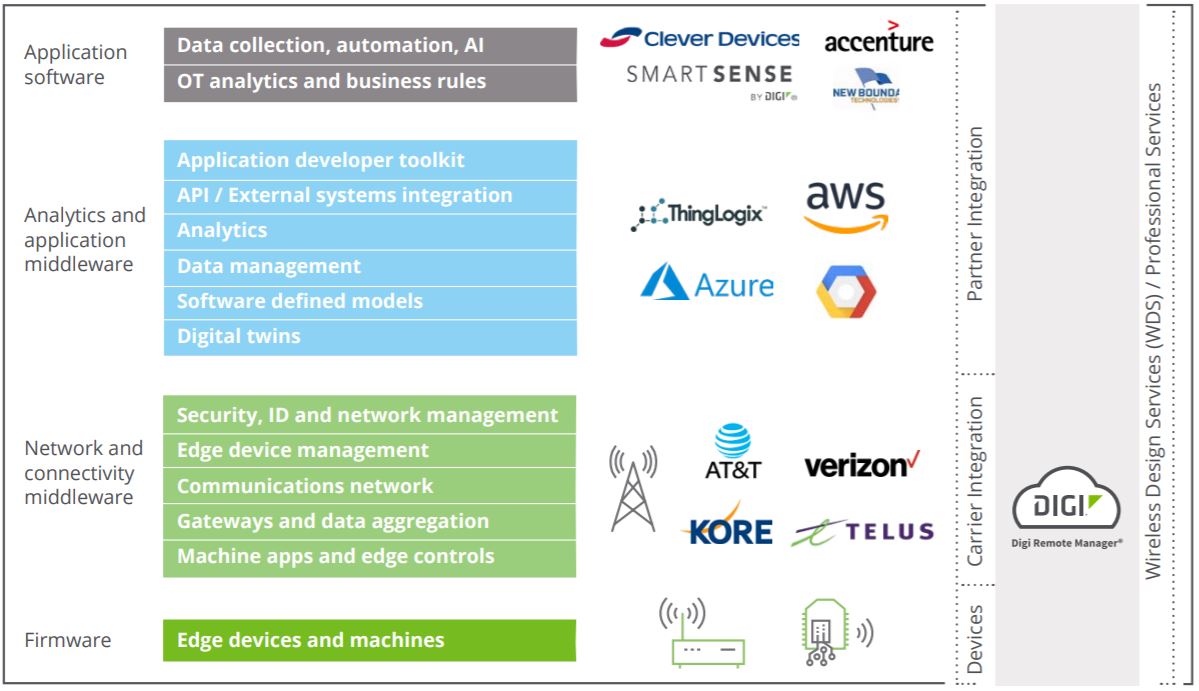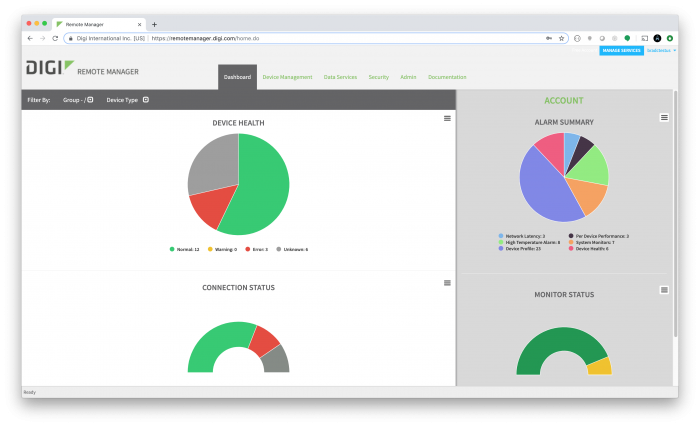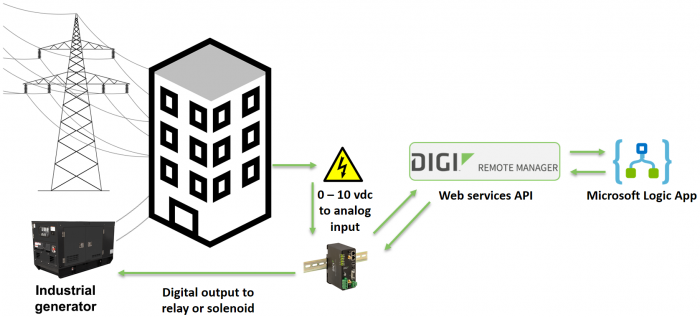Welcome to the next installment in our series on IoT device management, featuring Digi Remote Manager® (Digi RM). In the
first post in this series, we talked about the range of capabilities of Digi RM, including the ability to monitor and control distributed IoT devices, gain visibility into your device network, proactively manage your entire deployment, and manage your edge compute application logic.
In this post, we will cover some of the key functionality of Digi RM including another key feature, which is the ability to use Digi RM to integrate your device deployment with third party services such as Amazon Web Services, Microsoft Azure, ThingLogix and Google Cloud.
For discussion purposes, it helps to illustrate the entire ecosystem of hardware, software and middleware as the IoT stack. Digi Remote Manager touches or integrates with almost every layer in some fashion.

IoT Device Configuration and Security Management
Digi RM is a powerful security platform designed to give customers a single point of entry into all their Digi devices while monitoring and enforcing configuration profiles to ensure uptime and compliance. It supports device security by scanning deployed hardware at user-specified intervals and alerting owners if any device is found to be out of compliance with the master configuration or specified firmware version.
Alerts can even be triggered if the file system of a device does not contain the correct files according to the specified profile. This feature ensures that your files have not been tampered with by unauthorized code. Digi RM is not limited to just alerts and notifications. It also has the ability to automatically remediate device configurations if they are out of compliance, delivering the power of a self-healing network.
Health and Performance Monitoring

Another key feature of Digi Remote Manager is that the platform receives health and performance information from connected Digi hardware. It can also accept data from attached peripherals, such as sensors and other edge devices. All incoming data values become data streams, making all data equal from the viewpoint of Digi RM.
This is significant because it means users always interact with data using the exact same techniques, regardless of the data's point of origin. As a result, any solution built on the Digi RM platform is inherently modular. Users can pivot any solution to include additional types of data without the need to rip and replace their original application.
Digi RM Integration with AWS and Azure
Recently, Digi's software engineers have undertaken the task of further simplifying the process of integrating data from Digi Remote Manager into AWS and Azure. The Digi RM API provides two methods for engaging data from outside:
- Pull
- A request is sent from outside and Digi RM responds with the correct data.
- Push
- Monitors can post data automatically to other systems configured to listen for data from Digi RM.
Specifically, the team has created new methods for automating most of the steps usually required to manually facilitate integration with AWS and Azure. Here are links to two newly posted articles:
Here is an example of how a site power monitoring solution would work with a Microsoft Logic App:

Integrating data from Digi Remote Manager into other powerful ecosystems like AWS and Azure is easier than ever, and doing so can vastly increase the value of your company's device data. See the above articles, and the
Web Services Reference for Digi RM to see the potential benefits for your organization.
Contact us to start a conversation, or
sign up to receive our newsletter for updates from Digi!